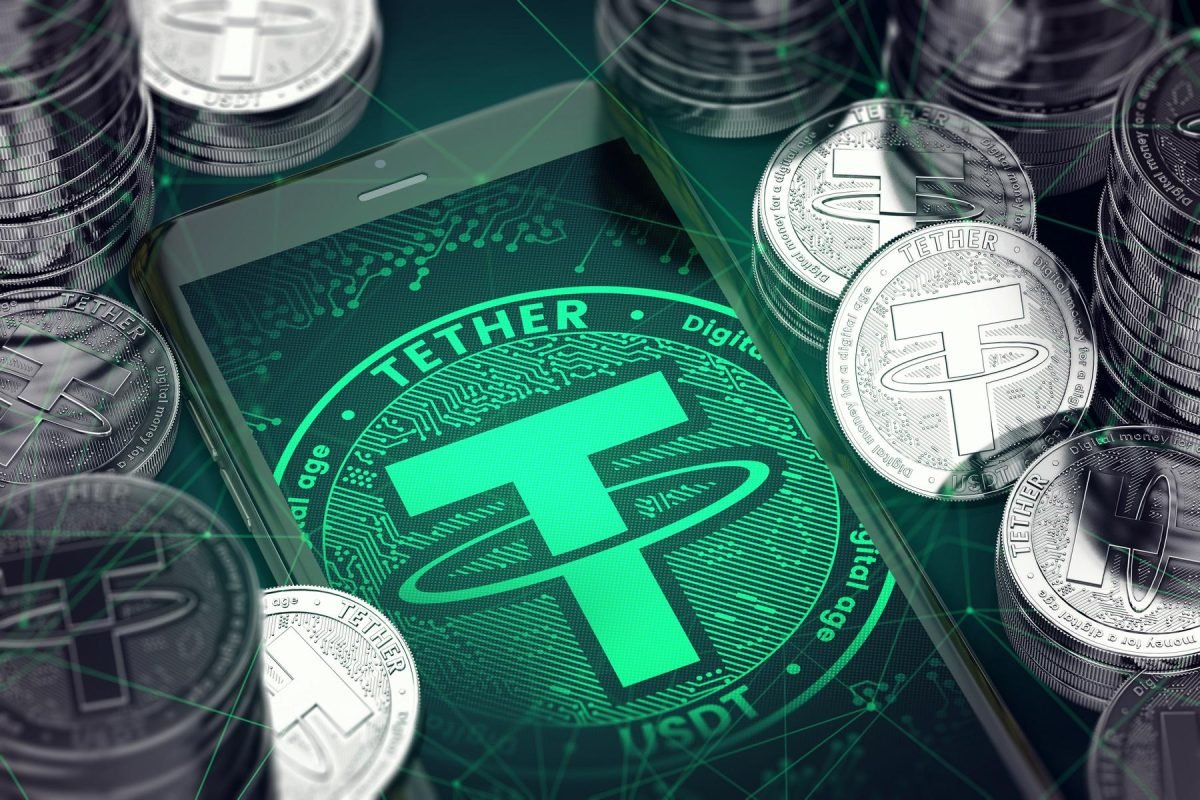Introduction to Tether Tokens
Choosing the Right Wallet for Your USDT
Choosing the Right Wallet for Your USDT
Types of Solana Wallets
How to Add Tether (USDT) Tokens to Your Wallet
How to Add Tether (USDT) Tokens to Your Wallet
Once you have selected your wallet, the next step is to add Tether (USDT) to it. The process varies depending on whether you’re using a mobile/desktop wallet or a hardware wallet.
For Mobile & Desktop Wallets (Coinbase, Binance, Exodus, etc.)
- Download and Install the wallet app or software from the official website or app store.
- Create a New Wallet or Import an Existing One using your seed phrase.
- Ensure Your Balance is Visible: Your wallet should display supported tokens automatically.
To Add USDT:
- Click Manage Token List > Add Token
- Search for Tether (USDT) or manually enter the contract address
- Click Add to complete the process.
For Hardware Wallets (Ledger Nano X, Trezor, etc.)
- Connect Your Ledger or Trezor Hardware Wallet via USB or Bluetooth.
- Install the Wallet’s Official App (e.g., Ledger Live, Trezor Suite) and navigate to the Token Manager.
- Install the Required Blockchain App (e.g., Solana, Ethereum, or BNB Chain) on your hardware device.
- Use a Compatible Wallet (e.g., Phantom, Metamask, Solflare) to connect your Ledger or Trezor for secure token storage.
- Manually Add USDT: Enter the token contract address to track and manage your USDT holdings.
Managing & Transferring Tether (USDT) Tokens
Managing & Transferring Tether (USDT) Tokens
Once your wallet is set up, you can send and receive USDT seamlessly, whether using a hardware wallet, mobile app, desktop wallet, or web-based wallet. The process typically involves generating a unique wallet address, which can be shared with others to receive funds. Most wallets offer a copy-and-paste function or a QR code scanner, making transactions quick and minimizing errors.
Sending USDT
- Open Your Wallet and select Tether (USDT) from your token list.
- Click “Send” and enter the recipient’s wallet address (ensure it matches the correct blockchain network, e.g., ERC-20 for Ethereum, TRC-20 for Tron, SPL for Solana, or BEP-20 for Binance Smart Chain).
- Enter the Amount of USDT to send.
- Adjust the Network Fee if applicable (fees vary by blockchain, with Tron (TRC-20) typically having the lowest costs).
- Confirm & Complete the Transaction. Your wallet may prompt you to verify details before finalizing.
Receiving USDT
- Navigate to the “Receive” or “Deposit” section in your wallet.
- Copy Your Wallet Address for the correct blockchain network (e.g., ERC-20, TRC-20, BEP-20, SPL).
- Share the Address with the sender. Alternatively, use the QR code for faster entry.
- Verify the Transaction in your wallet once USDT is received.
- Manually Add USDT if it doesn’t appear automatically by entering the contract address for the correct network.
Since USDT exists on multiple blockchains, always double-check that both the sender and recipient are using the same network to avoid loss of funds.
Staking USDT Tokens for Passive Income
Staking USDT Tokens for Passive Income
Using USDT for DeFi and NFTs
Using USDT for DeFi and NFTs
Tether (USDT) is one of the most widely used stablecoins in the cryptocurrency ecosystem, offering fast transactions, price stability, and multi-chain compatibility. USDT plays a crucial role in DeFi applications, centralized exchanges (CEXs), and NFT marketplaces, serving as a preferred trading pair and store of value. Whether used for lending, liquidity provision, or purchasing digital assets, USDT provides a seamless experience for both retail and institutional users.
Popular DeFi Platforms Supporting USDT
- Aave – A decentralized lending and borrowing protocol where users can deposit USDT to earn interest or use it as collateral for loans.
- Curve Finance – A stablecoin-focused automated market maker (AMM) offering low-slippage USDT swaps and liquidity pools with optimized yields.
- Compound – A decentralized lending protocol allowing users to earn passive income by supplying USDT to lending markets.
- Uniswap & PancakeSwap – Leading decentralized exchanges (DEXs) supporting USDT swaps on Ethereum (ERC-20), Binance Smart Chain (BEP-20), and other networks.
Popular NFT Marketplaces Accepting USDT
- OpenSea – The largest NFT marketplace, supporting USDT transactions on Ethereum and Polygon for buying and selling digital collectibles.
- Rarible – A multi-chain NFT marketplace that enables users to trade NFTs and digital assets using USDT and other stablecoins.
- Binance NFT – A platform integrated with the Binance exchange, allowing users to buy, sell, and mint NFTs with USDT, BNB, and other assets.
- LooksRare – A community-driven NFT marketplace where traders can use USDT to purchase NFTs and earn rewards.
How to Buy & Sell NFTs Using USDT
1. Connect Your Wallet to an NFT Marketplace
- Open your MetaMask, Trust Wallet, Binance Wallet, or Coinbase Wallet.
- Connect it to a trusted NFT marketplace like OpenSea, Rarible, or Binance NFT.
- Always verify the official website to avoid phishing scams.
2. Fund Your Wallet with USDT for Transactions
- Before purchasing NFTs, ensure your wallet has USDT on the correct blockchain (ERC-20, BEP-20, TRC-20, etc.).
- You can acquire USDT from exchanges like Binance, Coinbase, or Kraken and transfer it to your wallet.
- Some platforms may require a small amount of the native blockchain token (ETH, BNB, MATIC) to pay for gas fees.
3. Browse and Purchase NFTs Using Your USDT Balance
- Explore different NFT collections, filtering by category, price, and rarity.
- Select an NFT and review its ownership history and market value before buying.
- Confirm the transaction with your wallet, ensuring you are using the correct network and paying the necessary fees.
Choosing the Right Wallet for USDT
Selecting the right USDT-compatible wallet is essential for security, accessibility, and seamless DeFi and NFT transactions. With various options available, users must evaluate wallets based on functionality, ease of use, and safety measures.
1. Hardware Wallets (Best for Long-Term Security)
For users prioritizing security, hardware wallets like Ledger Nano X and Trezor offer offline storage, making them resistant to hacks and phishing attacks. These wallets are ideal for long-term USDT storage but may lack the convenience needed for frequent transactions.
2. Software Wallets (Best for Accessibility & DeFi Integration)
For a balance of security and accessibility, software wallets like MetaMask, Trust Wallet, and Coinbase Wallet provide a user-friendly experience. These wallets support DeFi interactions, lending, and NFT trading with USDT across multiple blockchains.
3. Mobile & Web-Based Wallets (Best for On-the-Go Transactions)
For maximum convenience, mobile and web-based wallets allow users to manage USDT anytime, anywhere. Binance Wallet, Trust Wallet, and SafePal provide mobile support, enabling quick access to DeFi, trading, and staking opportunities. However, these wallets are more exposed to security risks like phishing scams and malware, requiring strong authentication measures.
Essential Security Tips for Managing USDT
Regardless of your wallet choice, maintaining strong security measures is crucial to protect your USDT from hacks and unauthorized access.
- Use Hardware Wallets for Large Holdings – Store large amounts of USDT in a cold wallet like Ledger or Trezor to minimize risks.
- Verify Network Compatibility – Always check that the USDT version matches the recipient’s blockchain to prevent lost funds.
- Beware of Fake Tokens & Scams – Always confirm USDT contract addresses on official sources like Etherscan, Tronscan, or BscScan.
- Enable Two-Factor Authentication (2FA) – If using a mobile or web wallet, activate 2FA and biometric security for an extra layer of protection.
- Store Your Seed Phrase Securely – Never share your wallet recovery phrase and avoid storing it online to prevent theft.
Tether (USDT) serves as a stable and widely accepted digital asset for DeFi applications, NFT marketplaces, and everyday transactions. Whether you are a trader, investor, or NFT collector, choosing the right wallet, security measures, and platforms ensures a smooth and secure experience. By staying informed and implementing best practices, users can maximize their USDT utility while minimizing risks in the fast-evolving Web3 ecosystem.
Stay informed, protect your investments, and take full advantage of the opportunities within the Solana ecosystem!





